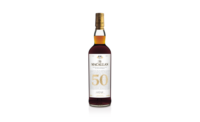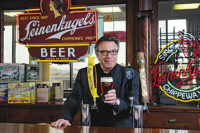Making the ‘Discovery’
As Starbucks expands its coffeehouse business abroad, it also is expanding its CPG business. In fact, the ready-to-drink coffee segment is far more mature in some international markets than it is in the United States. The Japanese market for RTD coffee, for example, is 10 times the size of the U.S. market. Working with Suntory, Starbucks has made Japan its model for expanding into the rest of the world.
“The market seems to be big for coffee because
coffee tends to be another product that you can drink that’s more natural, like tea and water,” says Rich
DePencier, vice president of international consumer products at Starbucks.
“In that particular market in Japan, they tend to stay away from
sugary beverages like sodas. So really what you find is most of the people
are drinking things that are good for them, more functional-based drinks.
And that’s where coffee comes in because it has such an authentic
flavor to it.”
Japan’s ready-to-drink coffee business is close
to $10 billion, and more than 80 percent of that is in bottles and cans. It
also is a highly competitive market for new products, where many products
fail within the first year and some within the first few weeks, the company
says. That led Starbucks to try a different approach when it launched an
RTD offering in 2005. It developed a “chilled cup” product
using locally roasted coffee and milk. Rather than glass bottles or cans,
the chilled cup products are packaged in covered plastic cups designed to
look like the cups Starbucks uses on-premise, complete with an expandable
straw attached to the side.
“Our inspiration was to be reminiscent of the
coffees of our coffee shops, of a fresh latte that you could get at our
store,” DePencier says. “That’s our benchmark when we do
product development.”
The company called the product Discoveries based on the
concept of flavors from far-away places. That, too, was a result of the
overall Starbucks business, DePencier says. “We’ve got hundreds
of farms all over the world that we’ve constantly got buyers going
to, and traveling and talking to farmers,” he says. “What
happens is lots of times in those markets, they’re inspired by the
flavors and the culinary work of the marketplace, and what we were finding
was they were coming back with great ideas that mix well with
coffee.”
The Discoveries lineup includes Milano Espresso,
Seattle Latte, Qandi Caramel and Paris Café au Lait, each with
graphics that represent those locations. Unlike bottled products, which
have a shelf life of several months, Discoveries has a 14-day shelf life
and carries a premium price that is more than twice that of bottled
products. The fresh quality of Discoveries was essential to launching the
product in Japanese convenience stores, which unlike c-stores in the United States, have a reputation for carrying fresher
products than other retailers, the company says.
“That element of freshness really is the key to
Discoveries,” says Gerry Lopez, president of Starbucks Global
Consumer Products Group. “The mating of the coffee with the fresh
milk is really what makes it quite a unique product, and quite candidly,
what makes it such a challenge to bring to a country like the U.S., where
the distances are a lot greater. You cannot produce it in a couple plants
and ship it all over; you’ve got to produce it locally and distribute
it locally.”
In addition to Japan, Starbucks has launched
Discoveries in Taiwan and Korea, working with Dongsuh in Korea and
Uni-President in Taiwan. It turned to its North American partner, PepsiCo,
for its RTD rollout in China this month. Using Pepsi’s bottling
network in China, the companies have launched bottled Frappuccino in
Beijing, Shanghai and Hong Kong.
The companies chose a unique marketing venue to
advertise the new products — a sponsored soap opera that plays on
flat-screen monitors in Shanghai’s subways. According to a report in The Wall Street Journal, the
“subopera” will be shown in daily segments of a few minutes
each and will be replayed throughout the day and on the Internet.
Starbucks bases is international expansion of CPG
products on its coffeehouse presence in each market. The company must have
a certain number of stores in a given country before it will consider
launching products into take-home channels. Last year, the company marked
its 10th year in the United Kingdom with the introduction of packaged
coffees in that market. As it does in the United States, Kraft Foods
handles distribution of Starbucks packages coffees in the United Kingdom
and in Canada.
Unlike its experience in Japan, where competition was
its biggest hurdle, the company’s challenge in the United Kingdom was
steering consumers away from their traditional instant coffee to a
relatively new premium segment. The company used coffeehouse personnel to
promote the take-home products, sent out postcards that told consumers they
could also find Starbucks coffee at their supermarket, and teamed with U.K.
retailer Tesco for a sampling program.
“It is an instant [coffee] market, but what
we’re finding is, just like in the wine industry, as people become
more and more familiar with coffee, they want to grow and they want to
experiment and they want to discover new flavors and forms,”
DePencier says. “The premium segment is the one that’s
growing.”

